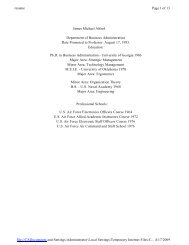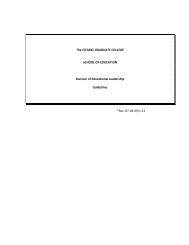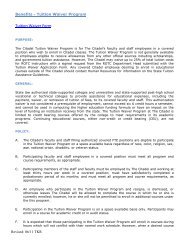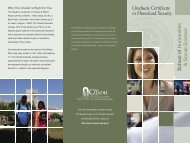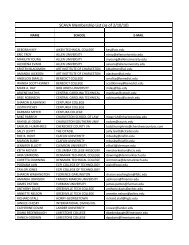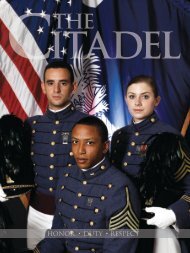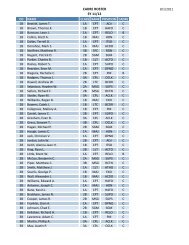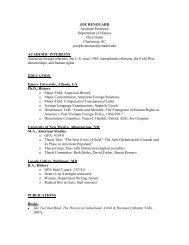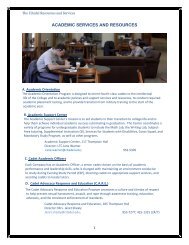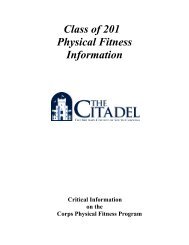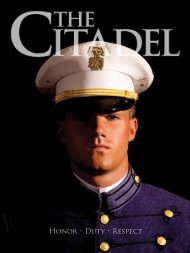Guidelines for Student Teaching Internship - The Citadel
Guidelines for Student Teaching Internship - The Citadel
Guidelines for Student Teaching Internship - The Citadel
You also want an ePaper? Increase the reach of your titles
YUMPU automatically turns print PDFs into web optimized ePapers that Google loves.
and are designed to expose students to a variety of intellectual, social, and culturalperspectives. <strong>The</strong> sequence of the teacher’s units (as presented through timelines,curriculum maps, planning and pacing guides, and so <strong>for</strong>th) follows a logical progression,with an appropriate amount of time allocated to each instructional unit.1.D <strong>The</strong> teacher develops appropriate processes <strong>for</strong> evaluating and recordingstudents’ progress and achievement<strong>The</strong> teacher’s evaluation process includes the major <strong>for</strong>mal and in<strong>for</strong>mal assessments tobe used (e.g., observations, exams, research papers, per<strong>for</strong>mance, projects, portfolios)and the evaluation criteria <strong>for</strong> each. <strong>The</strong> teacher’s evaluation methods are appropriate <strong>for</strong>the learning goals and the content. <strong>The</strong> evaluation criteria match state, local, and/orindividually determined expectations <strong>for</strong> student progress and achievement. <strong>The</strong> teacher’srecord-keeping system provides a confidential and well-organized system <strong>for</strong> storing,retrieving, and analyzing all necessary student data.1.E <strong>The</strong> teacher plans appropriate procedures <strong>for</strong> managing the classroom.<strong>The</strong> teacher’s rules and procedures <strong>for</strong> managing student behavior, whether developedindependently by the teacher or collaboratively with the students, are clearly stated,appropriate <strong>for</strong> the students, and consistent with school and district policies. <strong>The</strong> rules arestated in positive terms, when possible, and focus on behaviors rather than on students.<strong>The</strong> teacher’s procedures <strong>for</strong> managing essential noninstructional routines (e.g.,transitioning between activities and/or subjects, taking roll, collecting student work,preparing learning centers or labs, retrieving instructional materials or resources) promoteefficiency and minimize the loss of instructional time.APS 2Short-Range Planning of InstructionAn effective teacher facilitates student achievement by planning appropriate learningobjectives; selecting appropriate content, strategies, and materials <strong>for</strong> each instructional unit;and systematically using student per<strong>for</strong>mance data to guide instructional decision making.In this context, the term instructional unit is defined as a set of integrated lessons that isdesigned to accomplish learning objectives related to a curricular theme, an area of knowledge,or a general skill or process. <strong>The</strong> length of instructional units—that is, the number of days orlessons they cover—will vary in accordance with such factors as the number of objectives to beaccomplished; the complexity of the content to be covered; and the ability levels of theparticular students.KEY ELEMENTSThis standard requires the teacher to demonstrate the following abilities and dispositions:2.A <strong>The</strong> teacher develops unit objectives that facilitate student achievement ofappropriate academic standards and long-range learning and developmentalgoals.<strong>The</strong> teacher’s objectives define what the students should know (i.e., the factual,conceptual, procedural, and/or metacognitive knowledge) and be able to do (e.g., thecognitive processes—remembering, understanding, applying, analyzing, evaluating,<strong>The</strong> <strong>Citadel</strong>, School of Education 32




